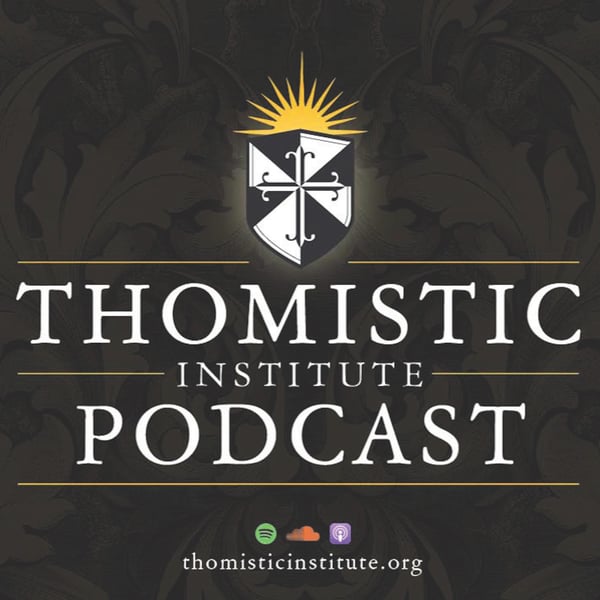Nicaea’s ‘Christological surplus, or, How to remember the creed’ | Prof. Lewis Ayres
The Thomistic Institute
The Thomistic Institute
4.8 • 729 Ratings
🗓️ 23 April 2025
⏱️ 43 minutes
🧾️ Download transcript
Summary
Prof. Lewis Ayres examines how the Nicene Creed functions as a generative and interpretive “cipher” within Christian tradition, tracing its roots to the adaptation of Second Temple Jewish imaginative worlds and the development of early rules of faith to highlight the creed’s ongoing role in shaping theological reflection.
This lecture was given on February 7th, 2025, at Dominican House of Studies.
For more information on upcoming events, visit us at thomisticinstitute.org/upcoming-events.
About the Speaker: Lewis Ayres is Professor of Catholic and Historical Theology at Durham University in the United Kingdom. He specializes in the study of early Christian theology, especially the history of Trinitarian theology and early Christian exegesis. He is also deeply interested in the relationship between the shape of early Christian modes of discourse and reflection and the manner in which renewals of Catholic theology during the last hundred years have attempted to engage forms of modern historical consciousness and sought to negotiate the shape of appropriate scriptural interpretation in modernity, even as they remain faithful to the practices of classical Catholic discourse and contemplation. His publications include Augustine and the Trinity (2010) and Nicaea and Its Legacy: An Approach to Trinitarian Theology (2004). Professor Ayres has co-edited the Blackwell Challenges in Contemporary Theology series (since 1997), the Ashgate Studies in Philosophy and Theology in Late Antiquity series (since 2007), and has just co-founded with Fortress Press the Renewal: Conversations in Catholic Theology series. He serves on the editorial boards of Modern Theology, the Journal of Early Christian Studies, and Augustinian Studies. He has also served on the board of the North American Patristics Society.
Keywords: Arius, Christological Doctrine, Cyril of Jerusalem, Gnosticism, Imaginative World, Irenaeus of Lyon, Nicene Creed, Origen of Alexandria, Rule of Faith, Trinitarian Theology
Transcript
Click on a timestamp to play from that location
| 0:00.0 | Welcome to the Tomistic Institute podcast. |
| 0:06.0 | Our mission is to promote the Catholic intellectual tradition in the university, the church, and the wider public square. |
| 0:13.0 | The lectures on this podcast are organized by university students at Tomistic Institute chapters around the world. |
| 0:19.0 | To learn more and to attend these events, |
| 0:21.7 | visit us at to mystic institute.org. |
| 0:25.7 | Allow me to begin briefly and at the beginning |
| 0:28.4 | with some comments that I assume are uncontroversial. |
| 0:32.9 | Eventually, if all goes well, |
| 0:34.6 | you will see why I felt the need to begin here. |
| 0:38.6 | One thing on which I hope we can all agree is that the Christian imaginative world |
| 0:43.7 | represents a particular ordering and adaptation of the imaginative worlds of Second Temple Judaism. |
| 0:51.8 | I put the matter in this way to emphasize that we're not simply talking about the |
| 0:57.0 | earliest Christians reading and interpreting the Jewish scriptures that came to form part of |
| 1:03.1 | the Christian canon. We're also talking about Christians moving intellectually and spiritually |
| 1:08.7 | within traditions that circulated among the Jews of the |
| 1:12.2 | first century and which are only partly represented in the texts that become canonical. |
| 1:18.1 | Various traditions of angelology would be an excellent example. |
| 1:22.5 | I offer this very elementary observation just to emphasize the complexity of the imaginative world |
| 1:29.6 | into which Christianity was born. I use this phrase imaginative world to signify a set |
| 1:36.9 | of terminologies, narratives, and images by means of which a religious group describes the world |
| 1:43.5 | and describes its history and its relationship with the divine. |
| 1:47.0 | Thus early Christians adapted Jewish imaginative worlds to offer an account of who was in Christ, |
... |
Transcript will be available on the free plan in 28 days. Upgrade to see the full transcript now.
Disclaimer: The podcast and artwork embedded on this page are from The Thomistic Institute, and are the property of its owner and not affiliated with or endorsed by Tapesearch.
Generated transcripts are the property of The Thomistic Institute and are distributed freely under the Fair Use doctrine. Transcripts generated by Tapesearch are not guaranteed to be accurate.
Copyright © Tapesearch 2025.

